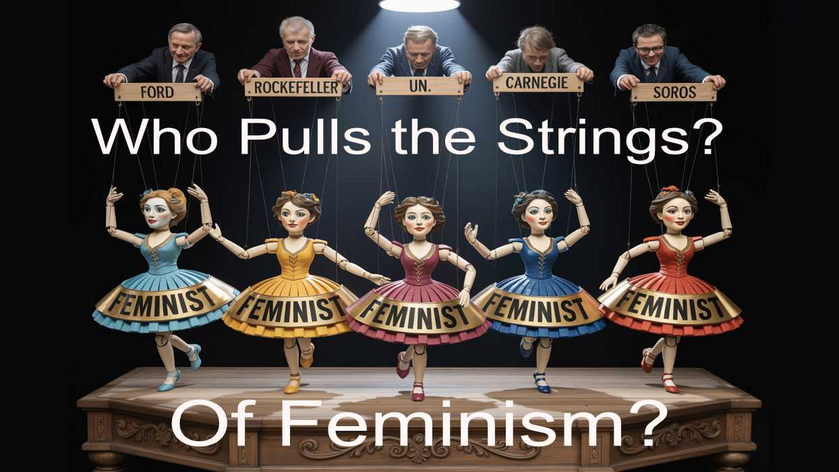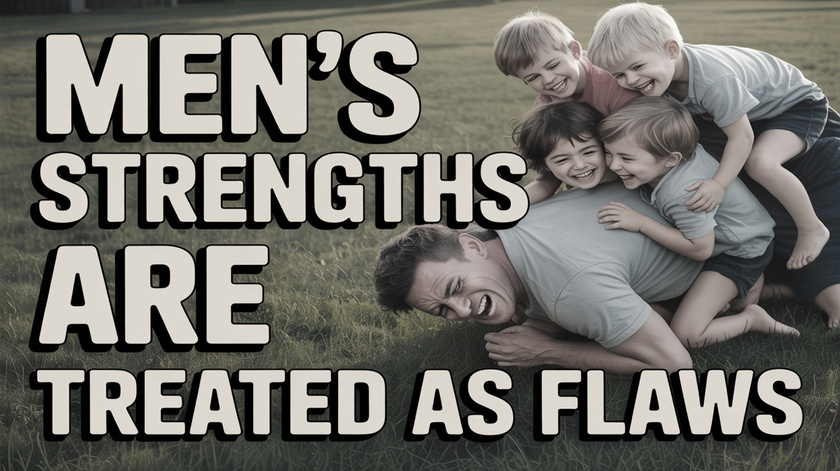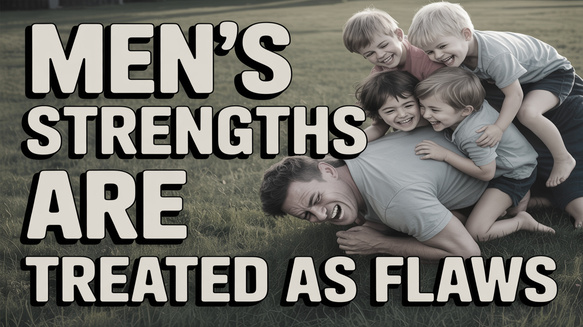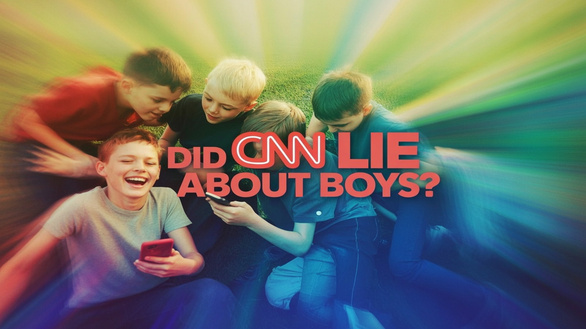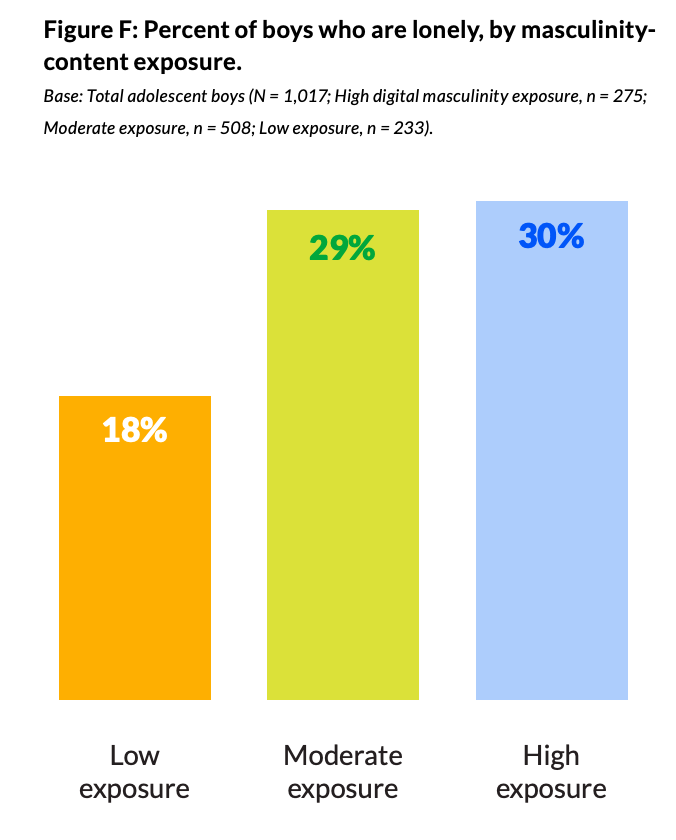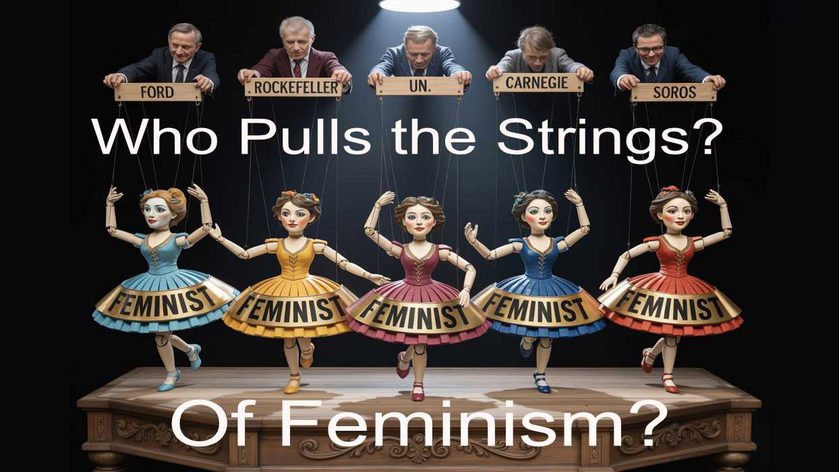
Who Really Funded Feminism — And Why
I’ve long wondered how the feminist wall was built. On the surface it looked like a grassroots uprising, but something about it felt orchestrated. What explained that difference? I first found clues in Frank Zepezauer’s The Feminist Crusades, a book that details the massive amounts of money funneled into the movement. That revelation opened my eyes. Later, when I dug deeper into who funded feminism and why, the picture sharpened even more. This post follows that money trail.
When people think of second-wave feminism, they picture grassroots energy: women in living rooms sharing stories, marching in the streets, pushing for change. And that may have been true — at first. But by the mid-1970s, something shifted. Feminism stopped being mainly a movement of street-level activists and began morphing into a network of credentialed scholars, policy advocates, and well-funded NGOs.
That transformation didn’t just happen on its own. It was fueled by very large amounts of money — from the Ford Foundation, the Rockefeller Foundation, Carnegie, later MacArthur, Open Society (George Soros), and even the federal government.
The Money Trail
Ford Foundation
In the 1970s alone, the Ford Foundation poured tens of millions into feminist causes. Mariam Chamberlain, a program officer at Ford, was the architect of much of this push. Between 1971 and 1981, she directed $5 million to seed women’s studies programs, feminist publishing, and policy research. At a time when universities were hesitant to invest in such programs, Ford’s grants provided the startup funds that allowed women’s studies departments to take root and flourish. Ford also funded feminist publishing houses and think tanks, creating both a scholarly and popular pipeline for feminist ideas.
By 1979, Ford’s total commitments to women’s initiatives had reached $20 million — a staggering figure for the era (over $85 million today). Most important, Ford chose which voices received institutional backing, embedding them in universities where they gained lasting authority.
The result: women’s studies did not simply emerge as a spontaneous movement. It was engineered into permanence by foundation money. Ford’s investments created credentialed authority that cemented feminist narratives in academia and policy circles for generations. No parallel funding ever launched men’s or boys’ studies.
Fast-forward to today: in 2021, Ford pledged another $420 million globally to advance gender equality in the wake of COVID — proof that its role in shaping gender discourse has remained consistent for half a century. And Ford was hardly alone. Other foundations followed the same path, pouring resources into feminist initiatives while ensuring elite philanthropy shaped the direction of the movement.
Rockefeller Foundation
Rockefeller’s contributions were smaller but highly symbolic. In 1970, NOW received a $15,000 grant (about $120,000 in today’s dollars) — modest in size but significant as a signal of elite endorsement. More broadly, Rockefeller had long funded population control and family planning programs, linking feminist calls for reproductive freedom to demographic priorities embraced by elites.
Carnegie Corporation
Carnegie’s support was less visible but reinforced the same pattern. It funded education and research initiatives that positioned women more strongly in professional life and academia, helping create the pipeline that legitimized feminist priorities.
U.S. Government
Washington soon joined the effort. The 1977 National Women’s Conference in Houston was funded with $5 million in federal money. Title IX (1972) and the Women’s Educational Equity Act (1974) came with federal dollars to advance feminist reforms in education and public life.
The government also invested heavily in domestic violence services. The Family Violence Prevention and Services Act (FVPSA), first enacted in 1984, provided grants for shelters, hotlines, and prevention programs. Since 1994, the Violence Against Women Act (VAWA) has been a cornerstone, initially authorizing $1.6 billion for investigation, prosecution, and services. In FY 2024 alone, the DOJ’s Office on Violence Against Women awarded over $690 million in grants. A conservative estimate suggests that since 1994, the U.S. has spent more than $15 billion on violence-against-women programs.
This is striking given that men are far more likely to be victims of violence, yet the government has spent very little on addressing their needs.
Ms. Foundation for Women
Co-founded by Gloria Steinem in 1972, the Ms. Foundation quickly became one of the most influential clearinghouses for feminist philanthropy. Its role was not simply to raise money but to re-grant foundation dollars in ways that seeded and sustained feminist activism at the grassroots level.
By the 1990s, the foundation was channeling millions to women’s centers, domestic violence shelters, reproductive rights campaigns, and academic initiatives. Grants often ranged from $5,000 to $50,000 — small enough to be considered “community grants” but large enough to keep organizations alive and aligned with the broader feminist project.
The flow continues today. Ford, for example, awarded the Ms. Foundation a $4 million BUILD grant (2018–22) to strengthen its capacity. Over time, Ms. became the bridge between elite funders and grassroots activists, shaping the movement by deciding which groups thrived and which withered.
United Nations
The UN has played a central role in globalizing feminist priorities, not just through declarations but through money. The 1975 International Women’s Year Conference in Mexico City and the UN Decade for Women (1976–1985) set the stage by creating institutional frameworks for feminist advocacy. These initiatives legitimized women’s rights as a matter of international governance, with governments encouraged — and often pressured — to align their domestic policies with UN resolutions.
Funding soon followed. In 1976, the UN established UNIFEM (United Nations Development Fund for Women) as a dedicated channel for financing women’s programs. By the 1990s, UNIFEM was distributing tens of millions annually to NGOs, training programs, and policy projects across the developing world. In 2010, UNIFEM was folded into UN Women, which has since become the central UN agency for gender equality.
UN Women operates the Fund for Gender Equality, a global grantmaking mechanism that has disbursed more than $120 million to over 140 programs in 80 countries since 2009. Its annual budget has grown steadily, reaching around $500 million in recent years, sourced from UN member states, private donors, and corporate partnerships. Much of this money goes directly to feminist NGOs, advocacy campaigns, and government programs designed to advance gender-mainstreaming policies.
The UN has also embedded feminism into global development frameworks. Gender equality became one of the Millennium Development Goals (2000) and was carried forward into the Sustainable Development Goals (2015), ensuring that aid flows and donor governments aligned their budgets with feminist priorities.
By contrast, the UN has never created an equivalent agency, trust fund, or global development goal for men and boys. Issues such as male suicide, fatherlessness, and educational decline remain almost entirely absent from UN programming. The imbalance is clear: while feminism was woven into the fabric of global governance and heavily resourced, men’s issues were left invisible.
MacArthur & Open Society
By the 1990s and 2000s, feminism had gone global, with major foundations exporting their influence abroad.
The MacArthur Foundation invested heavily in reproductive health and rights across the developing world. In India, its grants helped expand networks of reproductive-health NGOs; in Nigeria, it underwrote campaigns to integrate feminist perspectives into national health policy. By 2000, MacArthur had committed hundreds of millions globally, positioning itself as a leading private funder of reproductive rights.
The Open Society Foundations, created by George Soros, became another major engine of international feminist philanthropy. In Africa, OSF financed the African Women’s Development Fund, which has since distributed tens of millions to local feminist groups. In Latin America, OSF underwrote “gender justice” and LGBTQ+ campaigns. In Asia, it supported intersectional programs that tied feminism to poverty, ethnicity, and political repression.
Together, MacArthur and OSF globalized the feminist project. What began in the 1960s and 70s as domestic funding for women’s studies and advocacy had, by the 1990s and 2000s, expanded into a worldwide infrastructure of NGOs and policy centers. No comparable global investment was ever made for men or boys.
Melinda Gates (Pivotal Ventures)
In 2019, Melinda Gates announced through Pivotal Ventures a breathtaking pledge: $1 billion over ten years for women’s empowerment — the largest single philanthropic commitment of its kind. The money was designed to accelerate gender equality in the United States by funding women in leadership, promoting workplace equity, and strengthening feminist advocacy.
Through Pivotal Ventures, Gates directed funds into a wide array of partners, from advocacy groups and research institutes to corporate initiatives and grassroots organizations. The aim was to shift entire systems: how companies hire and promote, how political candidates are supported, and how cultural narratives about gender are shaped.
The scale of this investment effectively guaranteed feminist organizations a decade of unprecedented security and visibility. Yet no comparable billion-dollar commitment has ever been made for men or boys.
Conclusion
Taken together, the record is unmistakable. From Ford’s seeding of women’s studies, to the Ms. Foundation’s grassroots re-granting, to MacArthur and Open Society globalizing activism, and finally to Melinda Gates’s billion-dollar pledge, elite philanthropy has engineered and sustained feminism’s rise for more than half a century. Billions of dollars built the departments, advocacy networks, and NGOs that now define public conversation about gender.
Meanwhile, men’s and boys’ issues received virtually nothing. No major foundation seeded “men’s studies.” No billion-dollar pledge launched a global network for boys. The result is not just an imbalance in funding, but an imbalance in culture and policy: feminism is treated as the unquestioned voice on gender, while men’s struggles — from suicide and fatherlessness to educational decline — remain largely ignored.
Why They Gave So Much
It’s tempting to think these were simply acts of generosity. But foundations don’t write checks this big without a reason. Their motives were strategic:
Population Control — Rockefeller and Ford had been pouring money into family planning since the 1950s. Funding feminism’s push for reproductive freedom advanced the goal of lower birth rates, especially among the poor and in the developing world.
Labor Force Expansion — Encouraging women into higher education and careers expanded the labor pool, fueling economic growth and tax revenues.
Cold War Soft Power — Supporting women’s rights projected America’s moral superiority over the USSR, where women’s workforce participation was touted as a socialist achievement.
Shaping the Message — By funding universities, NGOs, and professional associations, foundations steered feminism toward credentialed scholarship and identity politics, and away from grassroots demands like wages for housework or critiques of capitalism. Men, once imagined as partners in reshaping family and work, were recast as obstacles. That framing made the movement more marketable and easier to manage.
Global Development — By the 1990s, funding feminism had become part of development policy. Empowering women was reframed as “good governance” and a tool for stabilizing societies.
The Big Picture
So what happened? Feminism flourished — but only in the strands that aligned with elite agendas:
reproductive rights as population control
career advancement as labor force expansion
women’s studies as cultural influence
and men positioned as adversaries rather than allies
Meanwhile, more radical or working-class agendas — supporting families, addressing men’s challenges, critiquing capitalism — faded from view.
That’s what hundreds of millions of dollars do: amplify some voices while silencing others.
The takeaway: Feminism wasn’t simply a spontaneous cultural revolution. It was shaped, amplified, and institutionalized by massive foundation funding. The foundations didn’t just give money — they set the rules. Grants went only to those advancing elite priorities, with feminist leaders acting as distributors inside those boundaries. It was philanthropy as social engineering: slick, effective, and enduring.
Follow the money, and you’ll see: feminism was less a revolution from below than a project engineered from above.
Is the same thing happening today with men’s issues? Who gets grants? Large grants? From major foundations? It’s worth asking.
Men Are Good.
References
Ford Foundation – Changing the game for women and girls (overview of Ford’s women’s initiatives)
https://www.fordfoundation.org/news-and-stories/big-ideas/the-future-is-hers/changing-the-game-for-women-and-girlsFord Foundation – $420 million commitment post-COVID to tackle gender inequality (2021)
https://www.fordfoundation.org/news-and-stories/news-and-press/news/ford-foundation-commits-420-million-to-tackle-gender-inequality-around-the-globe-post-covid-19Rockefeller Foundation – $1 billion Gender Fund announcement
https://www.rockefellerfoundation.org/news/leaders-launch-new-1bn-gender-fund-to-advance-global-equality-and-womens-leadershipOpen Society Foundations – $100 million commitment to feminist political mobilization (2021)
https://www.opensocietyfoundations.org/newsroom/open-society-foundations-commit-100-million-to-support-feminist-political-mobilization-and-leadershipOpen Society Foundations – How we fund (overview of annual grants and impact investments)
https://www.opensocietyfoundations.org/how-we-work/how-we-fundAfrican Women’s Development Fund – Wikipedia entry (grant history and funders)
https://en.wikipedia.org/wiki/African_Women%27s_Development_FundGlobal Fund for Women – Wikipedia entry (grantmaking history, $100M+ since 1988)
https://en.wikipedia.org/wiki/Global_Fund_for_WomenUN Women – Fund for Gender Equality (global grantmaking mechanism)
https://www.unwomen.org/en/trust-funds/fund-for-gender-equalityRockefeller Archive Center – Women, Activism, and Reproductive Health Philanthropy (MacArthur and others at the 1974 World Population Conference)
https://resource.rockarch.org/story/women-activism-reproductive-health-philanthropy-1974-world-population-conference-bucharestAssociated Press – Black Feminist Fund aims to raise $100 million, $35 million already secured
https://apnews.com/article/7c545feeca154541f61118e4e45a85b2Melinda French Gates / Pivotal Ventures – Announces $1B Commitment to Advance Women’s Power Globally (May 2024) The Wall Street Journal+13Pivotal Ventures+13Pivotal Ventures+13
